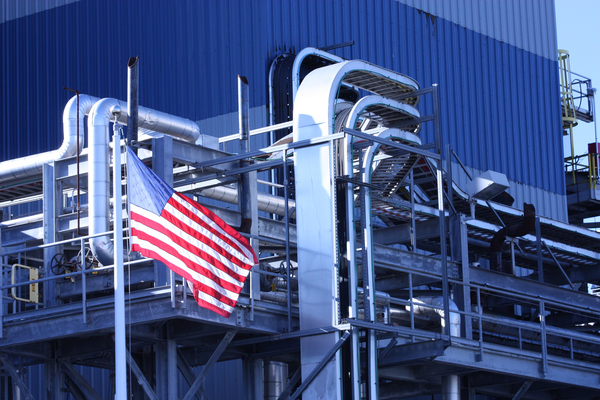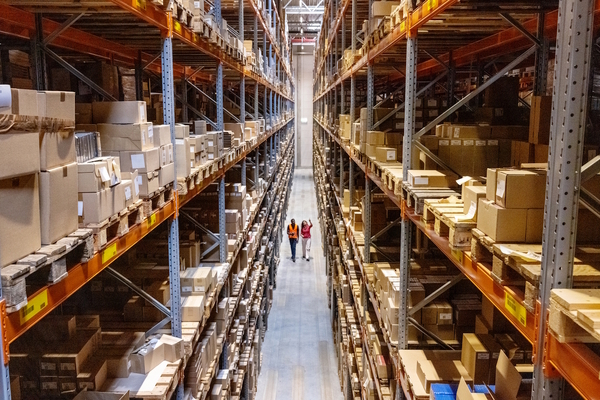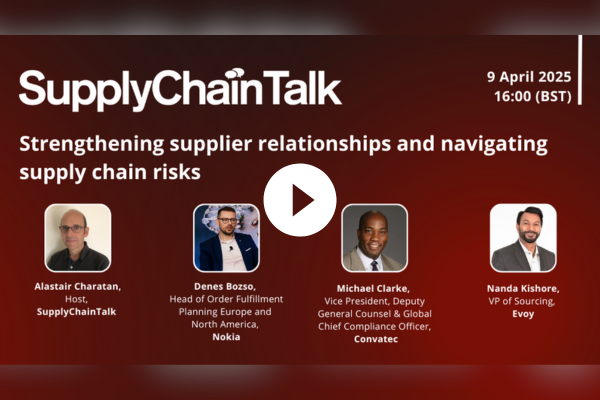SupplyChainTalk: Social value – how to achieve real impact through your supply chain
On 11 May, Supply Chain Talk host Duncan Brock was joined by Donato Masi, Senior Lecturer, Aston Business School; and Clive Geldard, Group Vice President Retail & Supply Chain, EFESO Consulting.
Views on news
More than two million adults in the UK have skipped meals for a whole day over the past month because they cannot afford to eat, including 2.6 million children – new research on the cost of living crisis says. There is a growing pressure on supply chains not only to work efficiently and resiliently in these disruptive times but also to create social and environmental value. Digital technology’s made it possible for businesses to see beyond their first-tier suppliers to gain efficiencies, as well as ensure they follow certain sustainability standards. Both the criteria of sustainability and resilience make a case for shorter supply chains. Advocates of supply chain optimisation, however, beg to differ. Masi, however, believes, that sustainability considerations and strategic thinking need to prevail even if they come at a cost. A shorter, local or regional supply chain allows for better control over your suppliers, as well as for closer partnership with them.
Strategies of cost reduction and creating social value
Despite all the available technology and talk about efficient supply chains and minimising waste, there are still plenty of dysfunctional and poorly synchronised supply chains. In reality, only about 10% of companies would regard themselves anywhere near to advanced in that sense. Disconnects don’t only exist between tier 1,2,3 suppliers but also across functions within an organisation and the business’s customers and consumers. Panic buying and out-of-the-ordinary purchasing patterns characteristic of periods of turmoil have greatly contributed to the shortages and the soaring inflation we’re experiencing now. Overproduction by manufacturers and retailers’ promotional campaigns are also responsible for generating hectic buying habits, waste and even social consequences. Improving workers’ safety is a tried and tested example of how investment in improving standards can pay off generously in the long run. Alignment of sustainability interventions with the company’s overall corporate responsibility policy is a key element – regardless of whether the strategy has cost efficiency or sustainability at its heart. Data from the World Retail Congress shows that about half of retailers globally think that there is some real long-term value to corporate sustainability initiatives. But in that light, the lack of visibility along supply chains becomes even more of a problem. The UN offers an excellent model in addressing the issue of visibility. Its global procurement has built an ESG weighting criteria into their model, where they can position ESG risk category by category relative to their spend and category importance to identify hotspots where they have the highest multi-factor exposures (corruption, pollution, hazardous waste, child labour etc).
Panel’s advice
If a supplier is not up to social standards, it may not be the best idea to find an alternative one following higher standards, as this attitude, if adopted at scale, may lead to a huge gap between high and poorly performing suppliers. Supplier integration, on the other hand, can offer a better solution – a framework that offers opportunities for suppliers to improve their practices and behaviours.
In developing countries, businesses need to make investments in compliance and auditing processes to ensure that a regulatory minimum is at least adhered to.
In addition to cost, the stumbling blocks to a sustainable supply chain that businesses need to avoid include unwillingness to prioritise sustainability, silo-based metrics, lack of know-how, anti-trust regulation hindering companies in the same sector to collaborate to reach critical mass, and lack of metrics and data to make a business case for more sustainable supply chains.

Business Reporter Team
Most Viewed
Winston House, 3rd Floor, Units 306-309, 2-4 Dollis Park, London, N3 1HF
23-29 Hendon Lane, London, N3 1RT
020 8349 4363
© 2025, Lyonsdown Limited. Business Reporter® is a registered trademark of Lyonsdown Ltd. VAT registration number: 830519543





